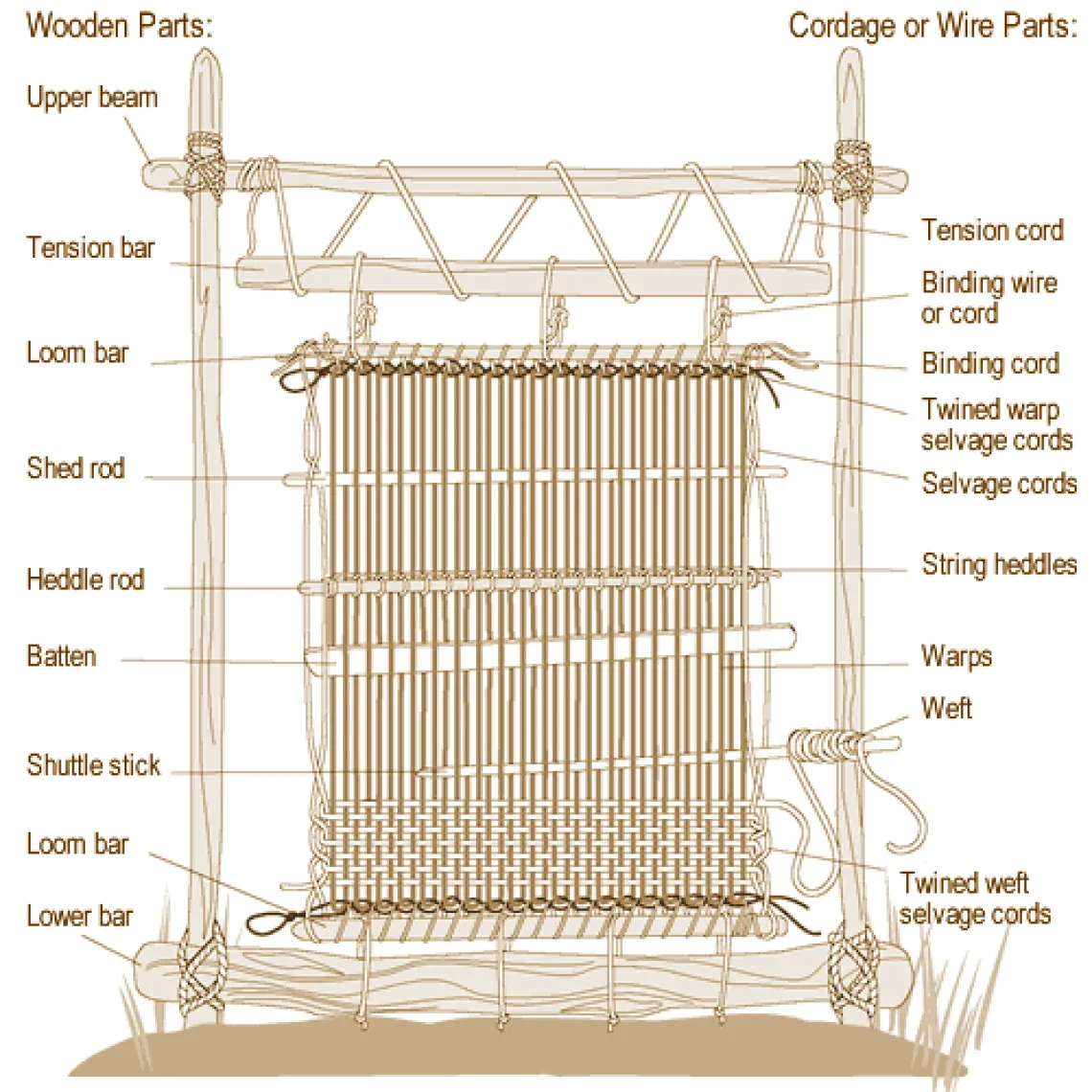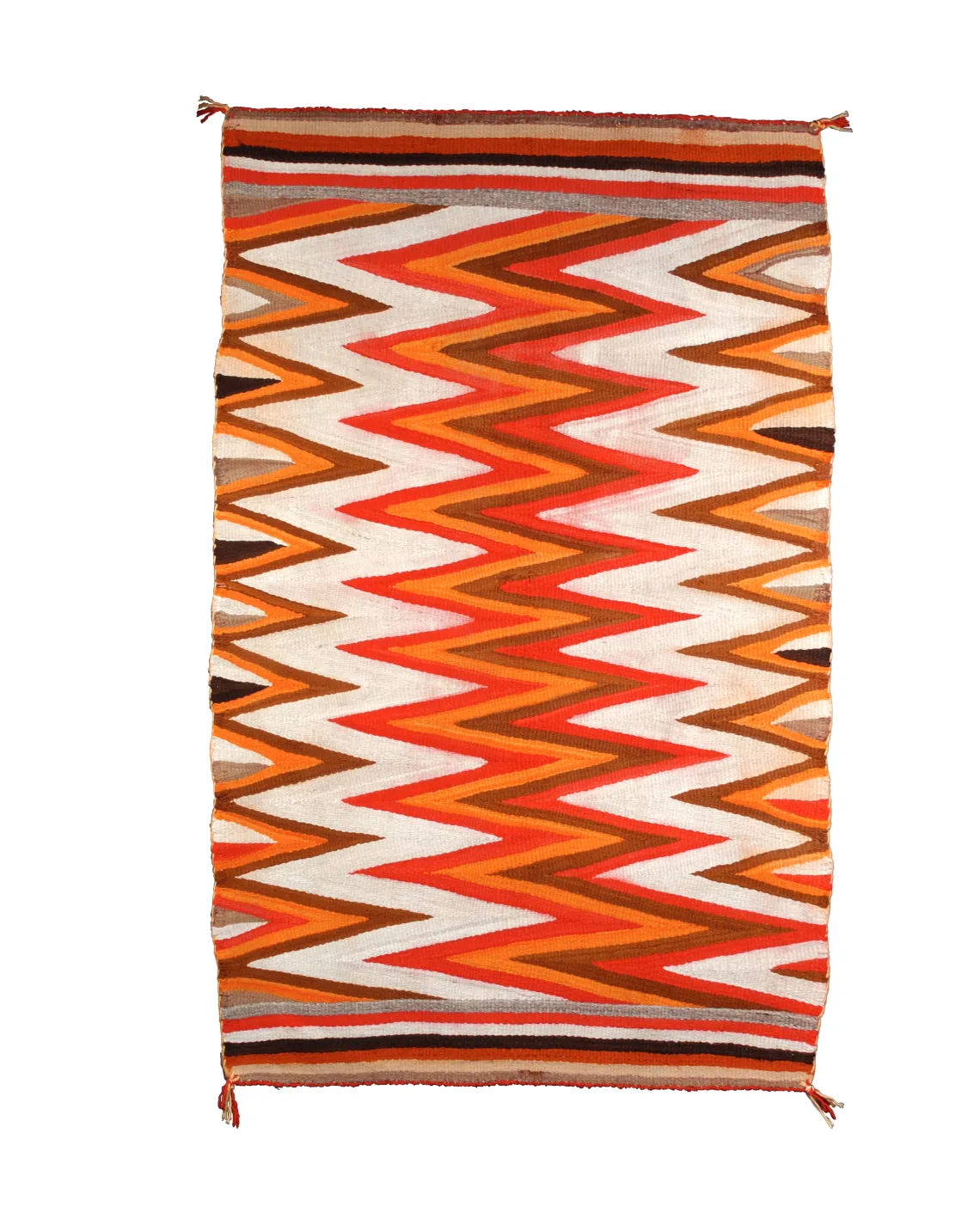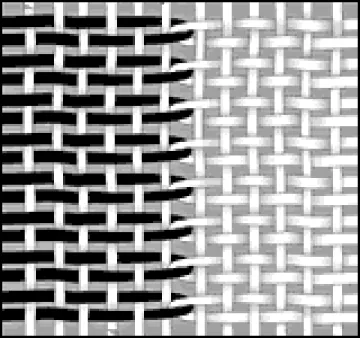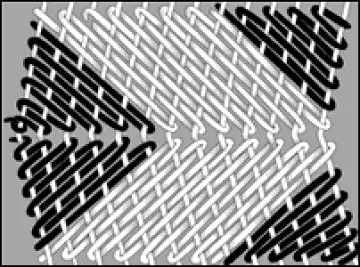
The Pueblo-Navajo upright loom. Illustration by Kathleen Koopman. From "Blanket Weaving in the Southwest" by Joe Ben Wheat, edited by Ann Lane Hedlund, 2003, The University of Arizona Press.
Sometimes in solid colored areas, a weaver inserted a diagonal “break” in her fabric, in order to avoid reaching across the entire fabric while weaving. Typical of Navajo weaving, this results in short diagonal lines across the solid colors and is sometimes called a “lazy line.”
Typical of Navajo and Pueblo weaving traditions, each blanket originally had four finished edges, or selvedges, in which all yarns return into the cloth rather than being cut and fringed or hemmed. To strengthen and decorate the edges, separate cords were twined into the fabric during weaving and formed into tassels at the corners.

Wedge weave blanket
ca. 1880-1885
Weft-faced plain weave with eccentric wefts
1.28 x 1.91 m
50.394 x 75.197 in
Catalog No. 2004-747-1
Gift of Heather and Oliver Sigworth.
“Wedge weave blankets appear in the 1880s and were made only by a few Navajo weavers. The technique’s origins are unknown. It is used occasionally in other places—for example, in the Andes, Middle East, and Scandinavia, but only as an accent and never for entire blankets.” —Ann Hedlund
“Today, a few weavers are reviving the wedge weave because of its unique structure and striking design possibilities. The sharp diagonal lines and quirky curves along the selvedges make this an appealing alternative to straight tapestry weave.” —Ann Hedlund
| Yarn | Fiber | Type | Color | Dye |
|---|---|---|---|---|
| a | Wool | Handspun | Gray | None |
| b | Wool | Handspun | Red | Synthetic |
| c | Wool | Handspun | Blue black | Synthetic |
| d | Wool | Handspun | Bronze Green | Vegetal? |
| e | Wool | Handspun | Pink | Synthetic |







